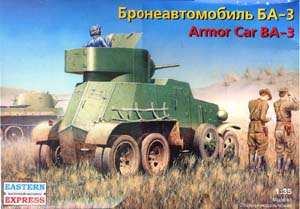Eastern Express 1/35 Soviet BA-3 Armored Car
By Ray Mehlberger
Kit No. 35125
|
History
Production of the BA-3 was done at the Izhorskij and the Vyksunskij factories, in 1934, on the base of the BA-1. The hull of the BA-1 only underwent minor changes. The rear section of the hull was extended by 50mm, the engine compartment got air vent windows, the running board was shortened, and the rear fenders now accommodated fastenings for all-terrain tracks. The body was installed on the Ford Timken chassis. This was accomplished with the help of 10 brackets which were bolted to the side members through rubber gaskets.
The main improvement to this new vehicle was the turret and its armament. The BA-3 received the turret from the T-26 tank, which had 8mm of armor with paired weapons mount. This consisted of the 45mm 20K gun, model 1932/38 (supplied with 60 rounds) and the DT machine-gun.
The ammunition was located partially in the turret and partially in the hull. In a recess in the turret were two honeycomb racks with space for 40 shells. Along the hull walls there were housings for 12 more rounds (six per side) and 8 more rounds were stored along the walls in the fighting compartment (four per side). Four racks, in the turret and the hull, held 53 magazines of ammo for the machine-gun.
For the first time in Soviet armoured car manufacture, the rear wheels of the BA-3 were outfitted with all-terrain track links in an attempt to improve mobility. These were known under the foreign name "OVERALL". Each track weighed 17kgs and was comprised of 25 80 x 35mm links. The length of one track was 4500mm, step size was 180mm. Installation of these tracks took the entire vehicle crew to do in 10 to 15 minutes.
180 BA-3's were produced (some records say it was only 168).
WHAT'S IN THE BOX?:
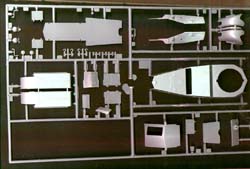 |
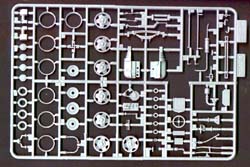 |
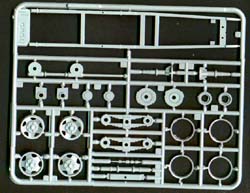 |
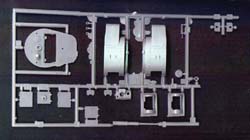 |
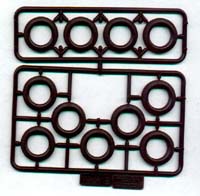 |
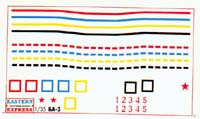 |

